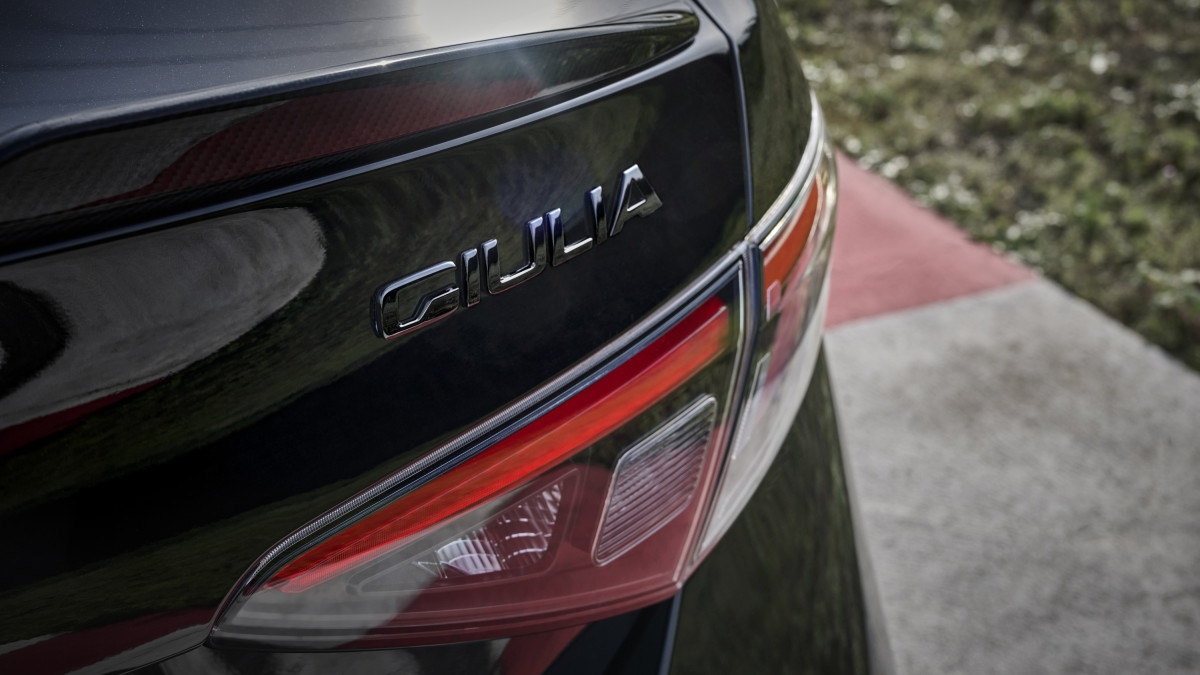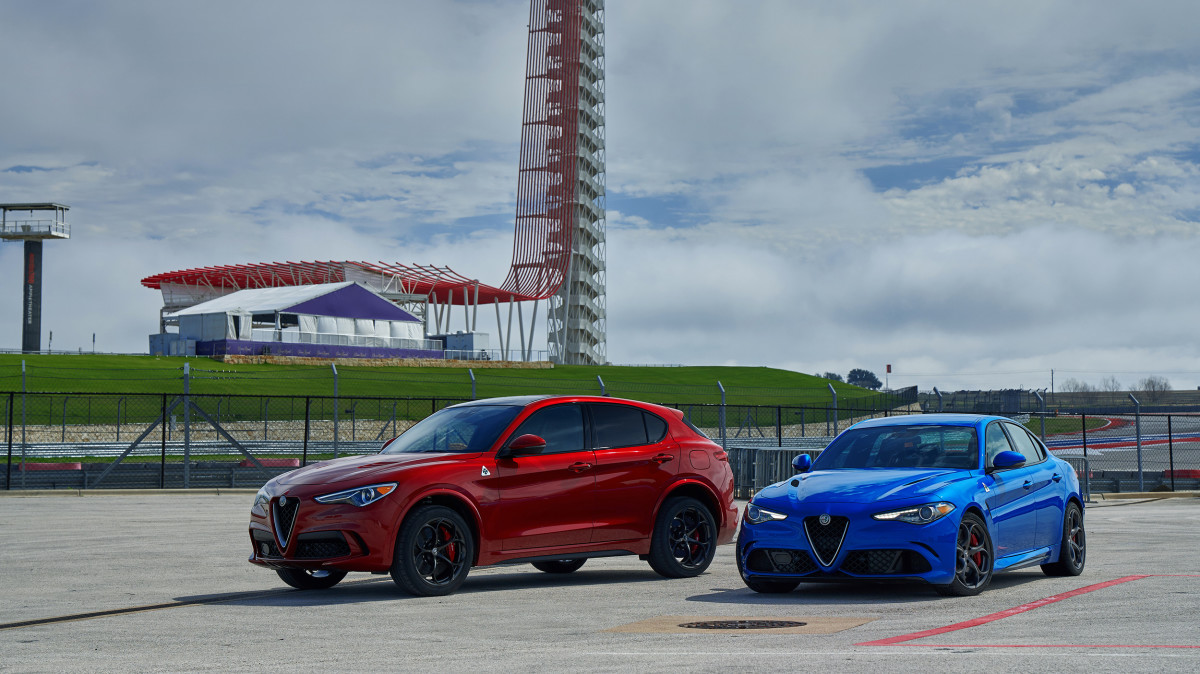Giulia & Stelvio Quadrifoglio To Provide Multiple Choices, Says CEO
Not too long ago, we were led to believe that the Tonale would be the last new gas-powered Alfa Romeo, and even the high-performance Quadrifoglio models were going to morph into EVs after leaving last year. Alfa Romeo even had plans to introduce additional all-electric models following its first BEV, the Junior (née Milano). But in recent months, Stellantis has been rebuilding its portfolio of combustion vehicles, and Alfa Romeo has been working towards the same. Alfa Romeo CEO (and Maserati CEO) Santo Ficili said earlier this year that the Stelvio and Giulia will be available with a “hybrid gasoline” powertrain come 2026, and now in an interview with Top Gear, he’s elaborated slightly, revealing that a last-minute redesign has enabled these and their Quadrifoglio variants to accommodate combustion in more ways than one.
“There will be PHEV and HEV and BEV,” said Ficili. “My dream is to keep alive the Quadrifoglio. We can’t forget this. Quadrifoglio can be BEV, why not? But it can also be ICE.” Pessimists will argue that this may indicate that the EVs won’t be as focused as they could have been, perhaps suggesting that Alfa Romeo was never fully committed to killing the V6, but we can only pass judgment when they arrive.
More Cooling For ICE, And “The Right Balance”
Stellantis
The 11th-hour redesign was to give the vehicles additional cooling intakes that would feed the gas engine, but the new plug-in hybrid and mild-hybrid versions of the Stelvio and Giulia won’t be radically different, said Ficili: “The design must be in line with the other models that we want to launch.”
Thus, it’s no surprise that the all-electric variants will still arrive first. Ficili hopes that Alfa Romeo’s first dedicated BEV, the Junior subcompact crossover, will help attract younger buyers to the brand. If they like it, there’s a good chance that they’ll consider another Alfa for their next EV, but that’s a medium-term plan with no guarantees, so the Italian automaker also needs to find ways of ensuring traditional Alfisti still appreciate what the brand stands for, as Ficili explains:
“When you look at the car, you must understand immediately it is an Alfa. And the driver must have everything under control. So I’m not imagining tons of things around you that don’t help. We need the right balance between suspension, steering, absorption, exhaust and engines to find the right handling of the car.”
More Fun To Come If Alfa Romeo Can Find Its Mojo
FCA
Ficili understands the unique affection Alfisti have for the band, saying, “We need to keep the customers who are in love with Alfa – and there is a long queue, because of the legacy, the racing, the glory, the product we created in the past.” The Junior and the compact Tonale were meant to help the brand boost sales to the point that it could produce more passion projects, but like the Giulietta and MiTo before them, initial sales interest has not been sustained. In the U.S., the Tonale attracted only 3,383 new owners in 2024. A facelift will try to reenergize the nameplate late this year, but because of current tariffs, Stellantis has been forced to reevaluate whether vehicles produced in Italy are worth importing for 2026, so this will likely only apply to Europe, the Middle East, and Africa, leaving the massive North American market out of the equation.
Related: What’s up with Alfa Romeo?
Leveraging Alfa Romeo’s exoticism could be one way of keeping the brand relevant in the minds of luxury buyers, with more projects like the 33 Stradale to come. “If I can also search for synergies with Maserati, we can imagine for sure to make products like this,” said Ficili. “We had the 8C, 6C, 4C. It’s easy. Why? Because I can look in the past of Alfa Romeo.” Finding inspiration isn’t the problem, though. Building relatively affordable but wholly desirable Alfas is. “There is space to work in the smaller segments: coupe, spider. But this is not our priority now, because we need the models that can deliver volume that can sustain the brand.”
Basically, Alfa Romeo can easily come up with new sports and supercars, potentially considering “parts of [the 33 Stradale’s] design, and [moving] these to future models,” but those can take a long time and a lot of money to develop and produce, and their appeal is much narrower. “We need to consider the two years ahead that are not so clear,” said Ficili. “And then we’ll see.”